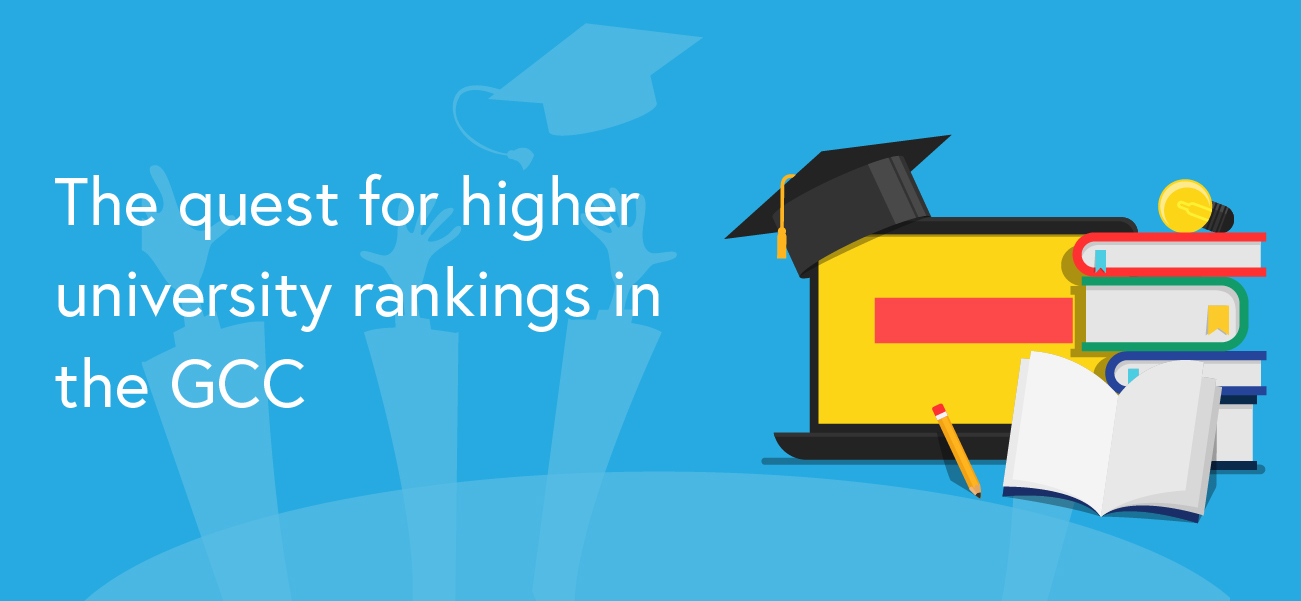How smart strategies give lift to GCC Universities in recently published Times Higher Education World University Index.
Here is a chicken and egg scenario: what was there first – the high-performing University or the University ranking index, measuring the competitiveness of Higher Education Institutions? You might simply say ‘the institution of course, it had to be there so that the index had something to measure in the first place’. That answer is a little simplistic. And in a truly competitive global academic environment, nothing is. Simple, that is.
There is a good reason to be competitive. Competition breeds the best in people, by aiming for the sky. It pits any budding academic’s work in say Ras al-Khaimah against the one associated with, for example, the highest-ranking institution in one of the most established such indexes, namely the Times Higher Education World University Ranking. The 2019 results have just been released – still headed by two British Universities known as much for their rowing prowess as for their brilliant international reputation. Is it just chance that rowing is highly competitive and that the best at it keep the competition firmly aft of their bow?
Yet globally the game is changing. The East is gaining ground on the West, and this is writ large particularly in China. Tsinghua University performs stellar and tops the Asian THE ranking this year, at number 1 – a first for a Chinese Higher Education Institution. This is driven by high citation impact in Mathematics and Computing, where China is now leading over the US and Europe. The country is showing positive trends in Physical Sciences and Engineering, bolstered by improvements to international collaboration; around half of Asia’s top-performing Universities are now based in China alone.
So, what drives the attractiveness of a university, as measured in the ‘THE’ indices? As its reputation grows, more researchers are attracted to an institution. That results in higher quality research output, increased citations, and improvement in teaching and industry collaboration. All that in turn attracts the brightest in international talent, which goes to boost the performance of an institution – an open-ended upward spiral, as long as no major negative factor such as a decline in the economy impacts on the performance.
Now, where is the GCC region represented in the index this year, the United Arab Emirates in particular? How are its strategies paying off towards an improvement in regional and global competitiveness? Khalifa University – the merger of the Masdar Institute of Science and Technology, Khalifa University of Science, Technology and Research, and The Petroleum Institute – is leading the table, being the UAE’s sole contender in the 301–350 bracket. It is also highly ranked in the ‘THE’s’ Young University index, at place 49. Academic mergers are paying off, with similar strategies succeeding in France where Sorbonne University was created out of two separate entities, ranking in the top 100.
The largest University of the Emirates – UAE University, founded in 1976 by the late esteemed Sheikh Zayed bin Sultan al Nahyan – has climbed into the 351–400 bracket, an improvement from the 501–600 ranking, where it hovered the past few years. Big improvements to citations and institutional income are to be credited with the success.
The American University of Sharjah and the University of Sharjah are represented within the top 1000, both helped by strong international collaborations and an improvement in research output.
In Saudi Arabia, the public King Abdulaziz University puts the strongest regional player on the map, boasting the only regional university in the 201–250 bracket. It also ranks highly in the Young and Asian indices, respectively, claiming spots in the top 20 brackets of each. Saudi Arabia is planning to invest $1.6 billion in its research programmes in order to launch five of its Higher Education Institutions into the top 100.
The University of Baghdad represents the reappearance of an Iraqi institution in the ranking for the first time in 15 years, raising hopes for a general improvement in the academic system of the country. It’s this kind of positive news that the region needs. I can’t help but think of the great library and Science Academy Beit al-Hikma of Baghdad’s historic heyday, and its formative influences and advancement of sciences globally.
Here is to hoping that the positive trends for local GCC Universities continue and that the strategies of funding research, collaborating with businesses, and strengthening international collaborations, thus positively impacting teaching and education, will help the academic landscape flourish for many years to come.
By Jan Nasrullah Rylewicz, Consultant – Knowledge E


